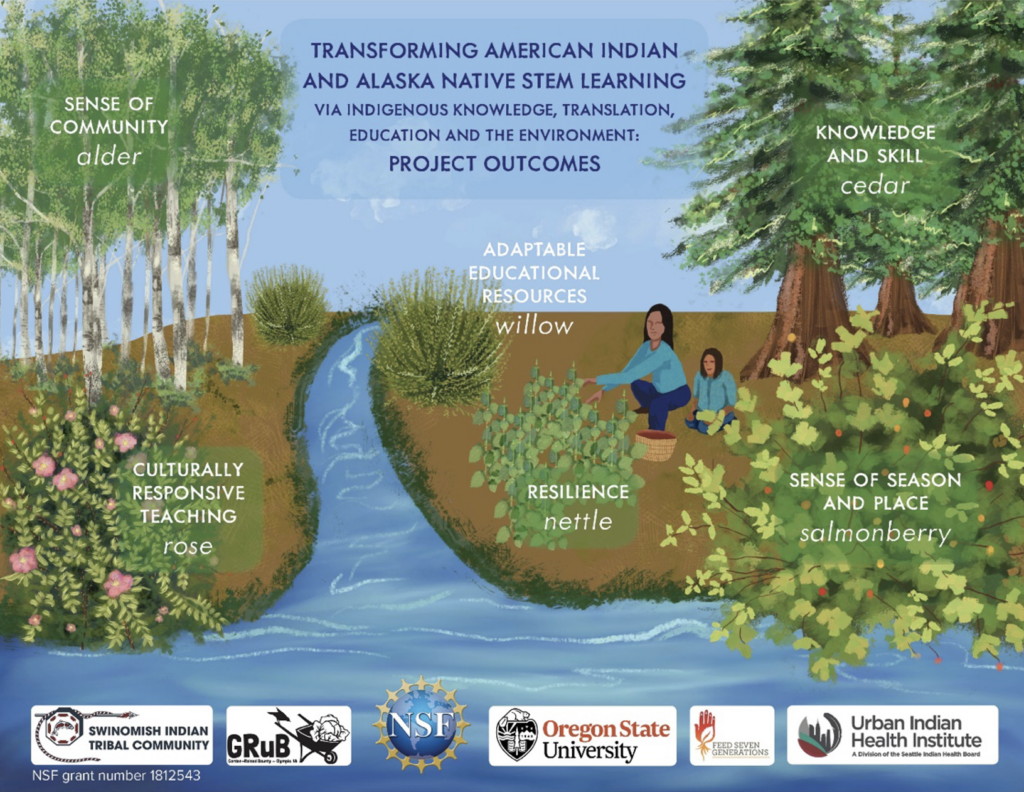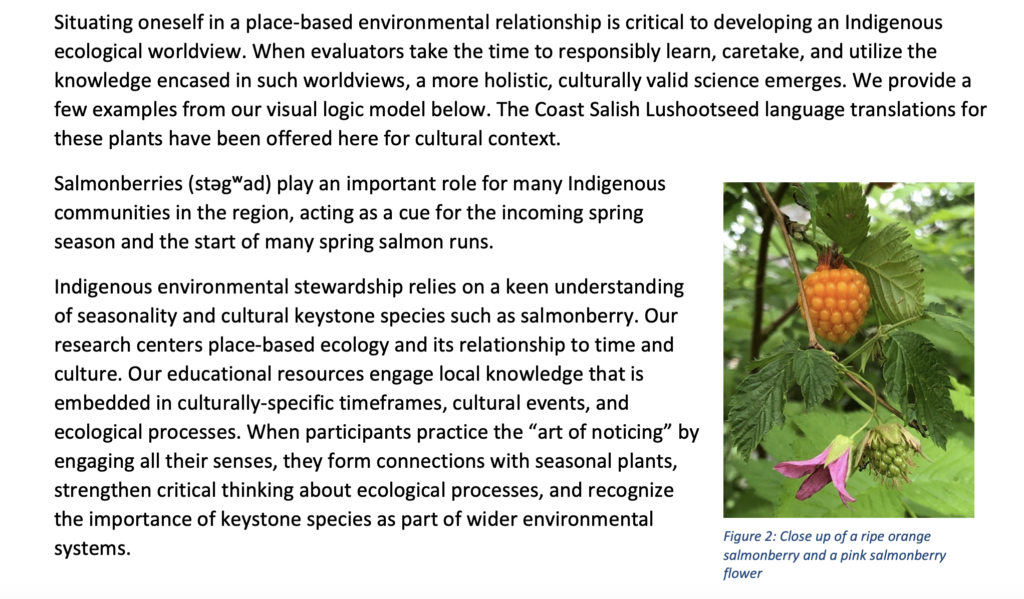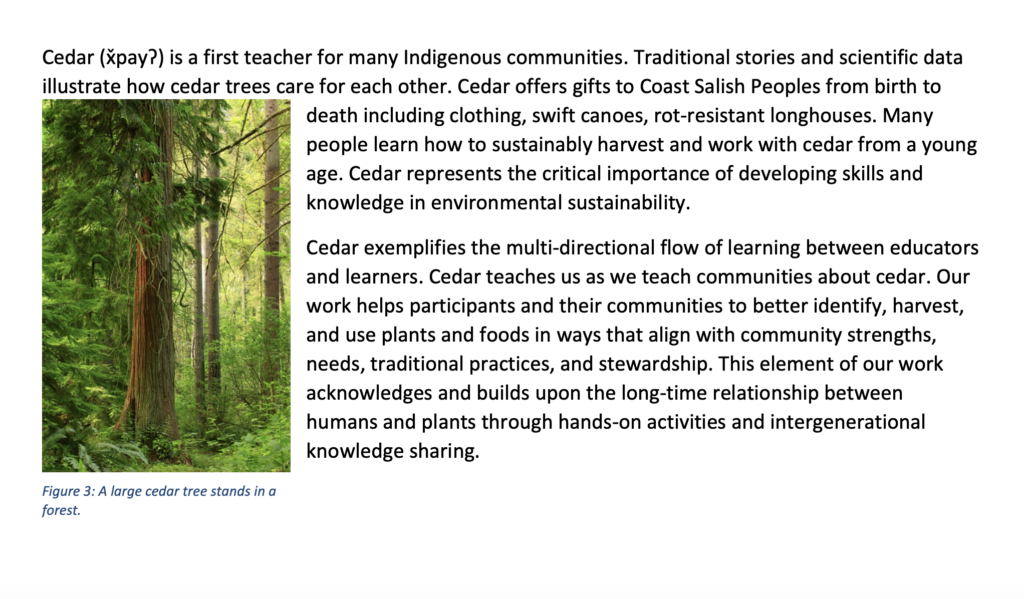We are a group of Indigenous and ally wild foods and medicines teachers from the Pacific Northwest Region of the United States. We are honored to be part of a strong movement to revitalize Indigenous lifeways, protect Indigenous knowledge, and support future environmental stewards through education. An important part of this movement is the development of culturally-specific and community-driven research, education, and evaluation models.
With the intention of centering Indigenous culture at all levels of our work, including evaluation, our team created a visual logic model that coalesces Cascadia region Indigenous values and environmental sustainability learning outcomes. Community partners guided this work, including Tribes, Elders, and Indigenous community organizations. Conventional methods for visualizing environmental research tend to remove human and cultural elements, often focusing on water-based or land-based food webs. As an alternative, visual models help to tell stories about the research and data and are a meaningful tool for evaluating and sharing project outcomes with diverse communities, including Tribes (particularly Elders), community partners aiding in research projects, academics, and non-academic audiences.

Our visual logic model incorporates elements of Indigenous plants to tell the story of how they are central to community well-being at large. We paired each of our project outcomes with a specific traditional cultural plant:
- Sense of season and place: Salmonberry
- Resilience: Nettle
- Increased knowledge: Cedar
- Sense of community: Alder
- Culturally responsive teaching: Wild rose
- Adaptable educational resources: Willow
Hot Tip:


Rad Resources:
To learn more about our work, see the full visual logic model, and explore curricula, videos, and stories of our work, please visit here.
The American Evaluation Association is hosting Indigenous Peoples in Evaluation (IPE) TIG week. All posts this week are contributed by members of the IPE Topical Interest Group. Do you have questions, concerns, kudos, or content to extend this AEA365 contribution? Please add them in the comments section for this post on the AEA365 webpage so that we may enrich our community of practice. Would you like to submit an AEA365 Tip? Please send a note of interest to AEA365@eval.org. AEA365 is sponsored by the American Evaluation Association and provides a Tip-a-Day by and for evaluators. The views and opinions expressed on the AEA365 blog are solely those of the original authors and other contributors. These views and opinions do not necessarily represent those of the American Evaluation Association, and/or any/all contributors to this site.
